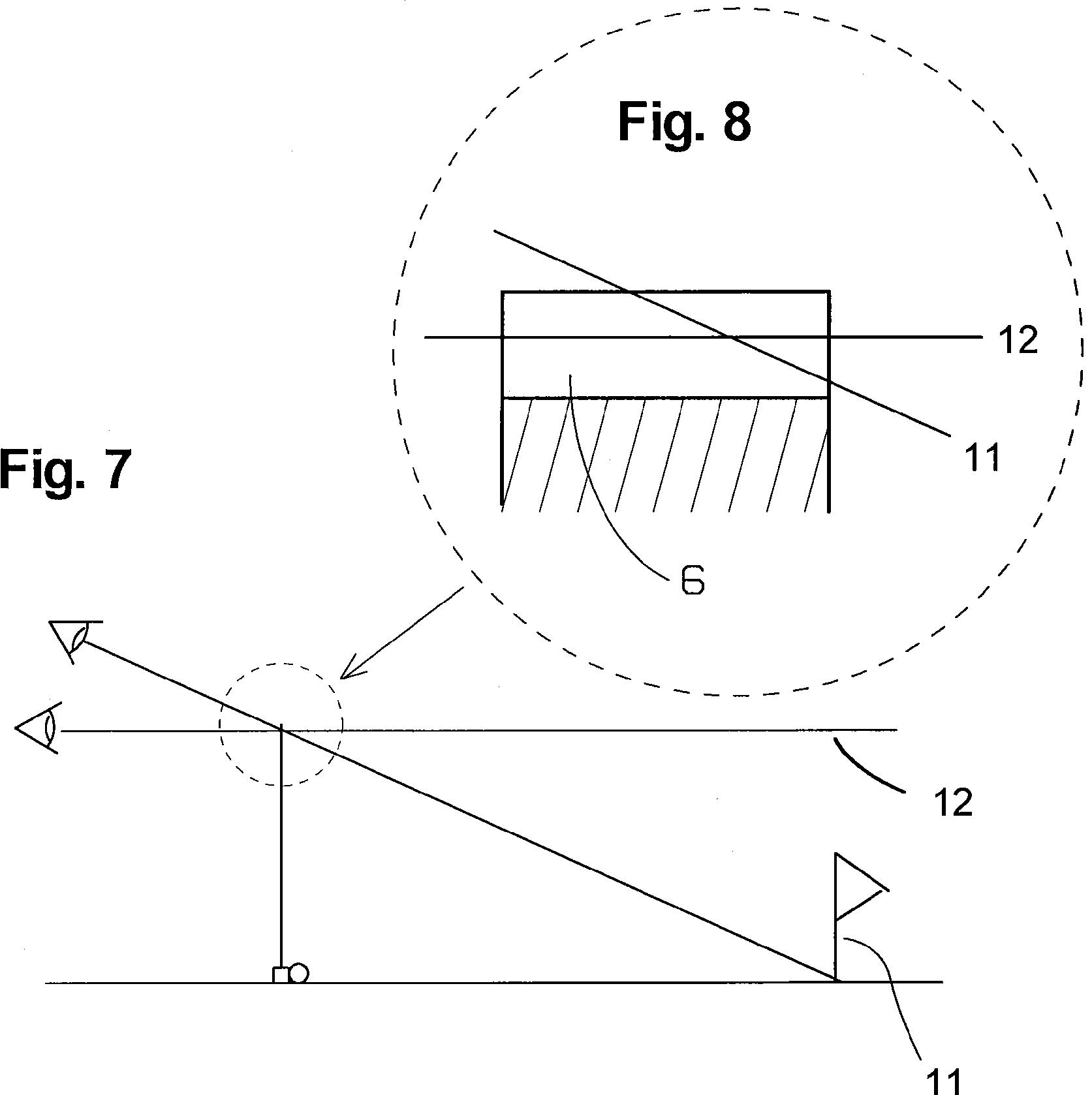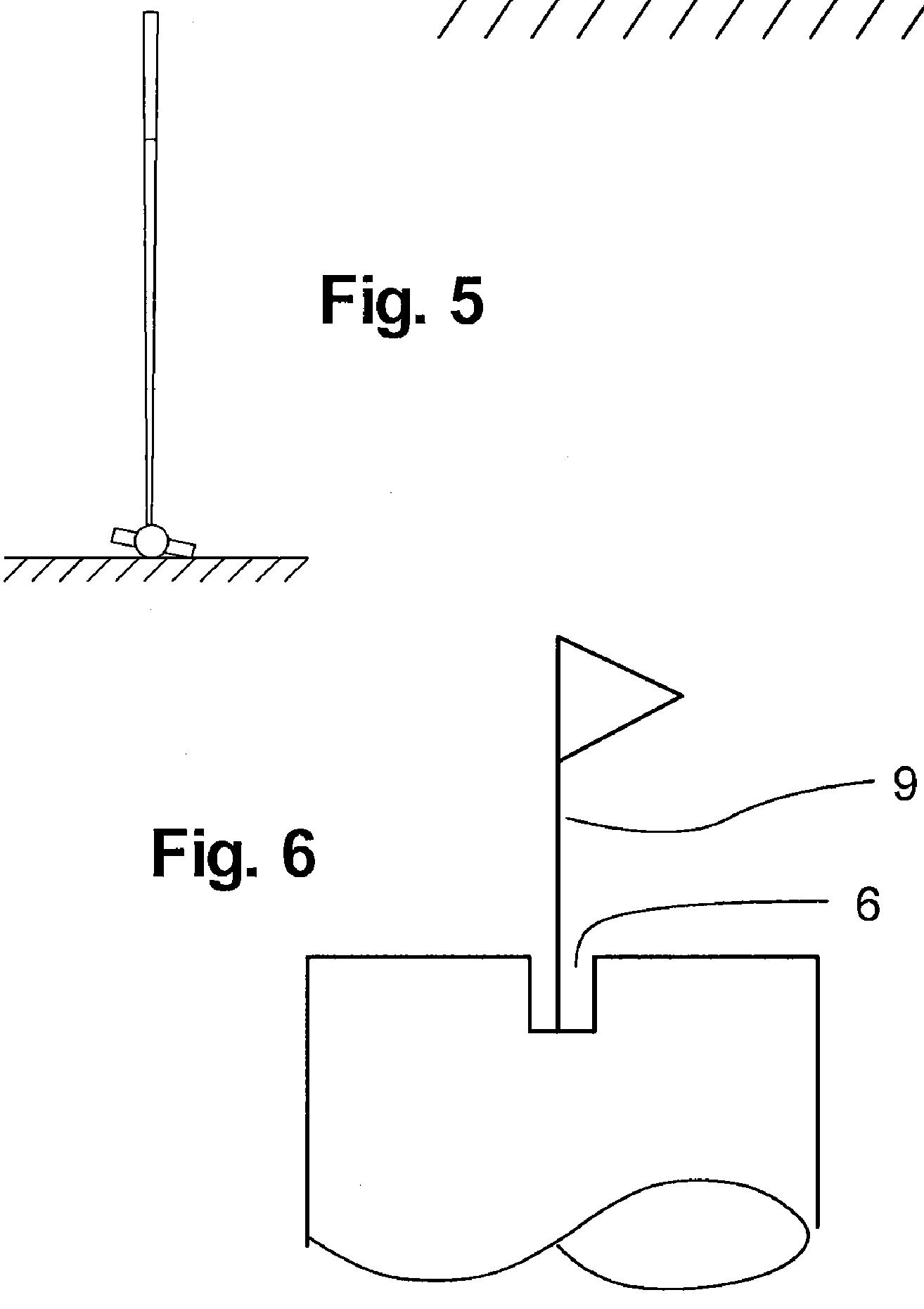Who Wouldn’t Want a “High-Precision Golf Club”
The name alone sells this invention. I mean, whose game could benefit from a “high-precision golf club?” A patent application recently published as US Pub. No. 20090253528 titled “High-Precision Golf Club,” which explains this “high-precision” invention as:
The invention relates to a device for a golf club providing an excellent orientation of the club head in the target direction. The disclosed golf club comprises a head having a striking surface, a grip having a butt end, and a shaft connecting the head at its upper end, and the grip at its lower end; wherein the butt end comprises an aiming notch oriented perpendicular to the plane of zero loft of the striking surface, and wherein the head comprises stabilizing profiles on its lower face.
DESCRIPTION OF RELATED ART
[0003] There already are devices whose purpose is to improve putting accuracy. The innovations concern mainly the adjunction of lines on a putter head. This enables a player to be well positioned in relation to the putter, but hardly improves the orientation of a striking surface in the desired direction. One can also mention the adjunction of a small cross (not shown) on the upper end of a grip of the golf club, the end called `but end`. One of the lines is parallel to the striking surface and the other is perpendicular to the striking surface. The latter is an additional aid to orientation, similar to the line situated on the top of the putter head. But it is also used by the player in address position, i.e. the player’s head is above the small cross; accuracy is thus hardly better than with the line.
BRIEF SUMMARY OF THE INVENTION
[0004] The disclosed golf club allows for an excellent orientation of a striking surface of a golf club head in the target direction.
[0005] As illustrated by the preferred embodiments, the disclosed golf club comprises a head having a striking surface, a grip having a butt end at its upper extremity, and a shaft connecting the head at its lower end, and the grip at its upper end; wherein the butt end comprises an aiming notch oriented perpendicular to the plane of zero loft of the striking surface, and wherein the head comprises stabilizing profiles on its lower face.
[0006] The grip of the golf club can further comprise at least one reference line extending from the aiming notch along the grip, parallel with the shaft axis, allowing a player to maintain maximum accuracy in the orientation of the striking surface for short-length putts.
.
.
.
.
[0022] In an embodiment represented in FIG. 3, an aiming notch 6, i.e. a small rectilinear notch, is gouged in the upper extremity, or the butt end 7, of the grip 2. The aiming notch 6 extends through the entire butt end and is parallel to the line 5. In order to aim, the player positions himself behind the ball, holds the shaft 1 vertically, with the putter head 3 touching the green, and visually aligns the aiming notch 6 in the target direction. Once in address position, the striking surface 4 is then oriented in the target direction with very good accuracy.
.
.
.
.
[0024] This direct aim is similar to that used with a gun, i.e. the aiming notch 6 is made to coincide with the line of sight going from the dominant eye to the target point. It is this true aim that produces the best orientation accuracy of the striking surface 4.
[0025] In the example of FIG. 3, the rectilinear aiming notch 6 crosses the grip butt-end 7. The aiming notch 6 is perpendicular to the plane of `zero loft`, i.e. to the plane of the striking surface 4 if the loft were zero. The loft, as indicated in FIG. 4, is the angle 8 formed by the striking surface 4 with a line perpendicular to the ground when the putter head 3 is placed on the ground. For common putters, the loft is of several degrees, which gives a striking surface 4 directed slightly skywards.[0026] The aiming is achieved in the following way. The player places himself behind the ball, for example crouching, and lets the putter hang whilst holding it by the top of the grip 2, with his arm stretched forward. The player positions the striking surface 4 just behind the ball and puts a toe 10 (see FIG. 2) of the putter head 3 onto the green. FIG. 5 shows the position of the putter relative to the ball at this stage of the aiming process. In this position, the shaft 1 is vertical and the aiming notch 6 is vertically above the ball center. The player moves his head laterally to align his dominant eye with the target point and with the zone of the aiming notch 6, and then pivots the putter shaft 1 around the shaft axis until the aiming notch 6 can be seen end-to-end. The striking surface 4 is then well oriented. An example of what the player sees in the case of a long putt when the putter is well oriented is given by FIG. 6. In this example, the target point is a flag 9.
[0027] The aiming is possible for all putt lengths, but the position of the dominant eye depends on the putt length. FIG. 7 shows two examples of positions of the dominant eye according to the putt length. The position 11 of the target point corresponds to a putt of about 2 m, and the position 12 to a putt of great length. FIG. 8 is an enlargement of the butt end zone of FIG. 7. It shows how the alignment lines of positions 11 and 12, respectively are situated in the aiming notch 6 for the two distances of FIG. 7.
The drawings below will explain your unanswered questions:

Are you buying it?
Dave Dawsey – Keeping an Eye on Golf Grip Inventions
PS – check out other golf grip patent related posts here


